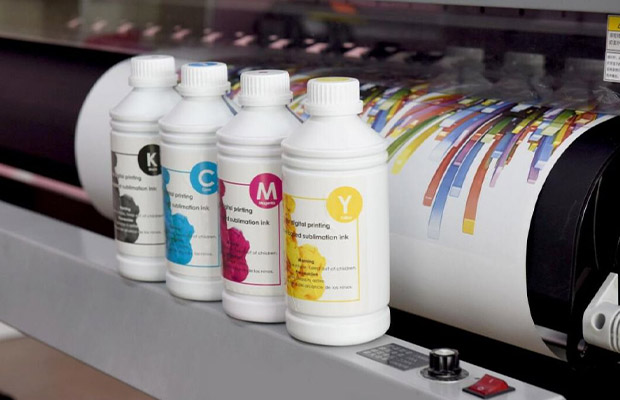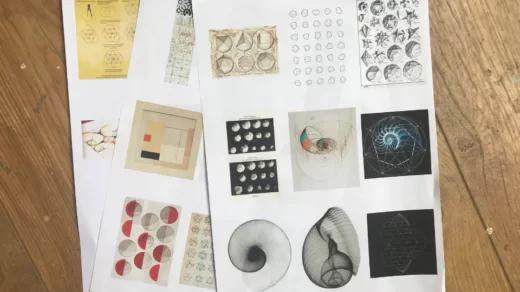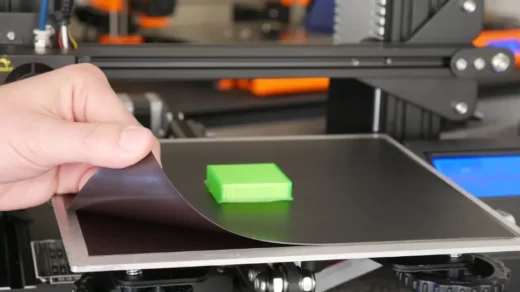Since their introduction in the latter half of the 1980s, inkjet printers have gained popularity and performance while seeing a significant decrease in price, making them the most popular option for home printing needs.
Unlike laser printers, which use toner and are typically used for high-volume printing in offices, these printers print by launching droplets of ink onto the paper.
Let’s examine inkjet printers’ operation in more detail.
Related Reading: How Many Pages Can an Ink Cartridge Print?
Table of Contents
The Definition Of An Inkjet Printer
Printers that use inkjet technology can be connected to a computer wirelessly or via a cable. It prints files or images on adhesive paper or high-quality photo paper at home after receiving them from a computer. As long as both the wireless device and the printer are connected to the same home network, anyone living in the house can print to the printer using a wireless device.
Bond paper that is slightly heavier, typically 24 lbs in the office rather than 20 lbs, is required because inkjet printers work best on non-porous paper. A paper’s hard surface prevents color bleeding and is specifically designed for use in inkjet printers. Compared to standard copy paper for offices, this paper is slightly more expensive. Although it costs more than adhesive paper, high-quality photo paper is also produced for inkjet printers.
The term “all-in-one printer” refers to a device that can print, scan, and copy. Inkjet printers also have these additional features. The document is typically placed face down on the glass surface of the printer for these two options, just like on a copier.
Read More: What is Printer Pooling?
Characteristics Of An Inkjet Printer
The majority of inkjet printers for homes cost little money, are compact, and light. Commercial-grade inkjet printers are more substantial, pricey, and capable of printing a wider variety of materials.
How many pages per minute are printed in black ink only and how many pages per minute are printed in color are typically used to gauge an inkjet printer’s speed. Although the speeds of various printer models vary, many are commonly rated at 10.5 pages per minute for black ink only and 5 pages per minute for color ink. Commercial inkjet printers are more expensive and faster than tiny home printers.
The majority of home inkjet printers can use paper in letter and legal sizes. Dedicated photo printers are a subclass of inkjet printers that are more compact and made specifically for images rather than documents. 4×6″, 5×7″, and other sizes are available.
Cartridges for inkjet printers are not cheap. Depending on usage, it’s not unusual for consumables to cost more than the printer did in a given year. Before purchasing a new inkjet printer, calculate the printer’s cost per page.
How Is Inkjet Printing Different?
Actually, dot matrix printers were the forerunner to inkjet printers. They dotted the paper with ink rather than using metal needles by using thousands of tiny spray guns. They still use dots to create the characters, just like dot matrix printers do, but the dots are so small that you can’t see them. Inkjet printers come in various varieties, and they all burn ink differently. In Canon printers, the ink is burned by heating, causing air bubbles to burst into the paper. Canon markets its printers under the “Bubble Jet” brand for this reason. The operation of Epson printers varies slightly. They make use of a phenomenon known as piezoelectricity. The tiny crystals are vibrated back and forth by tiny electrical currents that are managed by the printer’s internal circuitry, jetting ink as they do so. An inkjet printer can be visualized as a firing squad of nozzles that squirts out millions of ink dots onto the paper every second.
What Constitutes An Inkjet Printer’s Main Components?
All the crucial components are readily visible when the front of the printer is opened:
- Stepper motors turn plastic gears that turn rollers that feed paper through the printer.
- The electronic circuitry inside the printer sends printing instructions to the moving ink cartridges via a flexible ribbon cable. (The print head is precisely moved by the circuitry in inkjet printers, translating computer commands into those movements. Bob and the electronic components are not actually visible in this picture. Typically, the printer has a single, sizable circuit board on which all the parts are mounted, including the switches for control, LED lights, and various connections to the mechanism and power source.)
- Paper is held firmly in place by plastic and rubber rollers, allowing it to pass through the printer with pinpoint accuracy.
- The printer head is moved forward and backward on sturdy metal rails.
- To hold the paper firmly and move it precisely, the printer’s front is equipped with spike wheels.
- The print cartridges initially print right to left backward, then reverse the print information. Bidirectional printing is what makes pages print more quickly.
How Does An Inkjet Printer Works?
Small ink droplets are ejected from inkjet printers onto the paper to produce images. The paper is fed through a set of rollers as the printhead oscillates back and forth. Like the pixels on a television or smartphone screen, an image is composed of a great number of tiny dots.
Dots per inch (DPI), a measurement of image quality, are dependent on the printer’s capacity. A resolution of 1200 dpi or 2400 dpi is common for laser printers. Resolutions of 300 dpi or 600 dpi are available on some entry-level printers. For documents that are primarily text-based and comprise common graphics, lower ranges are acceptable. Higher resolutions are preferred for high-quality photos, though.
Inkjet printers frequently use the ink colors yellow, magenta (red), cyan (blue), and black. These can reproduce most colors when used together. However, some models combine inks into a single cartridge, despite the fact that typically each ink color is contained in a separate replaceable cartridge.
Inkjet Technologies
The majority of home printers dispense ink using the hot drop on demand (DOD) technique. Ink is transferred during this process from the cartridge to a tiny reservoir located behind the nozzle. In the reservoir, there is a small electric heating element. A drop of ink is forced out of the nozzle when the current pulse is passed because the solvent of the ink evaporates, increasing pressure. Ink is then drawn into the reservoir by the vapor bubbles as they condense and shrink.
Instead of heaters, large commercial printers use piezoelectric materials. In these gadgets, an inkwell’s back is covered with a piezoelectric diaphragm that resembles a small speaker.
The printhead is made up of nozzles, reservoirs, heaters, and piezoelectric elements. When new ink is required, the printhead in many consumer printers must be replaced because it is a component of a disposable cartridge. Fixed heads are used in pricey printers.
Large commercial inkjet printers utilize additional technologies, but home printers do not. The ink droplets in these are typically propelled and guided in a continuous spray using a combination of ultrasonic vibrations and electrical charges. This printer is quicker and uses a wider range of inks and dyes, including solvent-based and UV-curable inks and dyes. Prints produced in this way are stronger and waterproof than those produced by standard printers.
More Uses For Inkjet Printing
The cost of printing photos and documents on inkjet printers is low. There are numerous applications for commercial inkjet printing, though. Logos, billboards, T-shirts, and “best before” dates are all printed using this technique on food.
Secret Inkjet Printing Costs
Even with all-in-one printers with basic “copying” (both scanning and printing) and scanning built into the same device, inkjet printers are very affordable. Take a moment to consider how printer manufacturers do it before you astonish yourself with how much you get: their money doesn’t come from the printer, but from the inkjet cartridges that you will keep filling the printer forever (the so-called razor and blade business model). Inkjet cartridges are very pricey considering that they are merely tiny plastic boxes with ink-filled sponges inside. The printer appears to be built with an endless cycle of nozzle maintenance that uses a little bit more ink with each cleaning.
Laser Vs. Inkjet Printers
The main difference between the two is that an inkjet printer uses ink to print documents, while a laser printer uses a laser.
However, there are still a few minor variations between the two that could result in differences in functionality, speed, and image quality. Depending on your requirements, you might prefer one type of printer over another.
For those who:
- Print high volumes of black and white documents
- Need fast printers with large print capacity
- Do not need gallery-quality photo prints
- Need a printer for an office− Laser printers tend to be large and heavy, which makes them less suited for home offices
- Don’t mind that toner cartridges tend to be more expensive than ink cartridges for inkjet printers− However, keep in mind that while they’re more expensive up-front, they last much longer than ink cartridges
The following people would benefit from using inkjet printers:
- Require high-quality images− Inkjet printers have better tonal variety and are better at blending colors
- Print on a wide variety of paper types− Laser printers cannot print on paper that’s heat-sensitive, which limits the types you can use
- Don’t print that often− These printers tend to be slower and their paper trays may not hold as much
Final Words
Check out in-depth customer reviews before purchasing a printer. To avoid having to purchase pricey manufacturer original ink cartridges, look for a model with refillable ink tanks or other ink-saving features. You should also check to see if you can refill the ink cartridges yourself by using your own ink bottles and syringes. Try to use ink-saving fonts and print in draft mode if at all possible.
Read More: What is Pad Printing?








